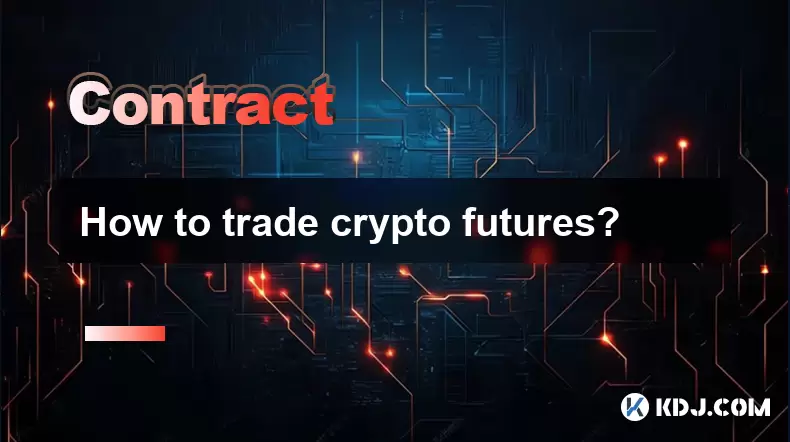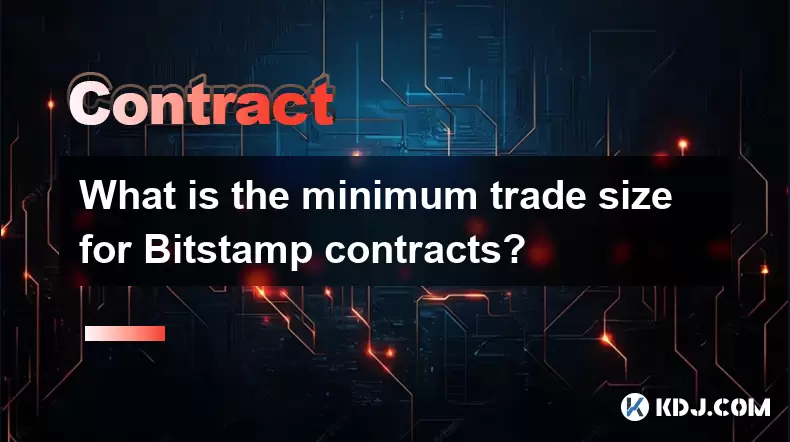-
 Bitcoin
Bitcoin $119000
0.17% -
 Ethereum
Ethereum $3664
-2.12% -
 XRP
XRP $3.229
-7.77% -
 Tether USDt
Tether USDt $1.001
0.02% -
 BNB
BNB $783.2
-1.48% -
 Solana
Solana $191.3
-5.26% -
 USDC
USDC $1.000
0.03% -
 Dogecoin
Dogecoin $0.2450
-7.74% -
 TRON
TRON $0.3115
-1.61% -
 Cardano
Cardano $0.8229
-6.80% -
 Hyperliquid
Hyperliquid $44.17
-2.93% -
 Stellar
Stellar $0.4343
-7.23% -
 Sui
Sui $3.792
-4.09% -
 Chainlink
Chainlink $18.38
-5.73% -
 Hedera
Hedera $0.2491
-7.79% -
 Bitcoin Cash
Bitcoin Cash $518.1
-1.51% -
 Avalanche
Avalanche $24.13
-5.84% -
 Litecoin
Litecoin $113.9
-5.41% -
 UNUS SED LEO
UNUS SED LEO $8.974
-0.21% -
 Shiba Inu
Shiba Inu $0.00001400
-7.98% -
 Toncoin
Toncoin $3.215
-2.09% -
 Ethena USDe
Ethena USDe $1.001
0.03% -
 Polkadot
Polkadot $4.178
-6.84% -
 Uniswap
Uniswap $10.38
-3.05% -
 Monero
Monero $317.8
-1.85% -
 Bitget Token
Bitget Token $4.733
-1.94% -
 Pepe
Pepe $0.00001293
-8.20% -
 Dai
Dai $1.000
0.02% -
 Aave
Aave $292.8
-4.74% -
 Bittensor
Bittensor $430.1
-3.67%
How to trade crypto futures?
Crypto futures let traders bet on crypto prices without owning the asset, using contracts that obligate future buy/sell at set prices and dates.
Jul 14, 2025 at 07:29 am

Understanding Crypto Futures Trading
Crypto futures trading allows traders to speculate on the future price of cryptocurrencies without owning the underlying asset. This form of trading involves contracts that obligate parties to buy or sell a digital asset at a predetermined price and date in the future. Traders use futures contracts to hedge against volatility, gain leverage, or profit from market movements.
Before diving into actual trading, it's crucial to understand how these contracts work. Each futures contract has an expiration date, and its value is tied to the spot price of the cryptocurrency. There are two main types: perpetual contracts, which don't have an expiration date, and fixed-term contracts, which do.
Selecting a Reliable Crypto Futures Exchange
To begin trading crypto futures, you must choose a reliable exchange that offers futures trading services. Not all platforms support futures, so it’s essential to verify this before registering. Look for exchanges with strong liquidity, robust security features, and transparent fee structures.
Some of the most popular platforms include Binance Futures, Bybit, OKX, and BitMEX. These exchanges offer user-friendly interfaces, advanced charting tools, and varying levels of leverage. Before committing funds, consider testing the platform using a demo account if available.
- Ensure the exchange supports your preferred cryptocurrencies like Bitcoin (BTC), Ethereum (ETH), etc.
- Check the maximum leverage offered (e.g., 10x, 50x, or even 100x).
- Review margin requirements and liquidation thresholds.
Setting Up Your Trading Account
After selecting a suitable exchange, the next step is to create and configure your trading account. Begin by completing the KYC (Know Your Customer) verification process, which typically requires submitting identification documents.
Once verified, navigate to the futures trading section of the exchange. Here, you'll find options to transfer funds from your wallet into the futures account. Most exchanges allow transfers in fiat currencies or stablecoins like USDT or USDC.
- Enable two-factor authentication (2FA) for enhanced account security.
- Set up stop-loss and take-profit orders to manage risk effectively.
- Customize your trading interface with preferred indicators and timeframes.
Understanding Leverage and Margin Requirements
One of the key aspects of crypto futures trading is leverage, which allows you to control a larger position size with a smaller amount of capital. However, while leverage can amplify profits, it also increases potential losses.
When opening a leveraged position, you must deposit a certain percentage of the total trade value as margin. The required margin depends on the leverage used. For example, with 10x leverage, you need to provide 10% of the trade’s value as margin.
- Understand the difference between isolated margin and cross-margin modes.
- Be aware of liquidation prices to avoid automatic closure of your position.
- Monitor your maintenance margin to prevent margin calls.
Executing Your First Trade
Once your account is funded and configured, you’re ready to place your first futures trade. Decide whether you believe the price will rise (long position) or fall (short position). Select the desired contract and specify the amount you wish to trade.
You can choose between limit orders, which execute at a specified price, or market orders, which execute immediately at the current price. Always set stop-loss levels to protect yourself from sudden market swings.
- Choose between perpetual contracts or fixed-term futures based on your strategy.
- Adjust your position size according to your risk tolerance.
- Use tradingView or other analysis tools to back up your entry decision.
Managing Risk in Crypto Futures Trading
Risk management is critical when dealing with leveraged products like crypto futures. Due to the high volatility of cryptocurrencies, even small price fluctuations can lead to significant gains or losses.
Implementing sound risk management strategies such as setting stop-loss orders, diversifying positions, and limiting exposure per trade helps mitigate potential losses. Many experienced traders recommend risking no more than 1–2% of your total capital per trade.
- Never ignore liquidation warnings issued by the exchange.
- Regularly monitor open positions during volatile market conditions.
- Avoid over-leveraging, especially when entering new trades.
Frequently Asked Questions
Q: Can I trade crypto futures with a small account?
Yes, many exchanges allow users to start trading futures with relatively small amounts. However, due to the risks associated with leverage, beginners should proceed cautiously and avoid overexposure.
Q: What happens when a futures contract expires?
Upon expiration, fixed-term futures contracts settle either in cash or through delivery of the underlying asset. Perpetual contracts, on the other hand, do not expire but may incur funding fees periodically.
Q: How are funding fees calculated in perpetual futures contracts?
Funding fees are periodic payments exchanged between long and short traders based on the difference between the perpetual contract price and the spot price. These fees help align the contract price with the underlying asset.
Q: Is crypto futures trading legal in my country?
Regulations vary by jurisdiction. Some countries fully regulate and license crypto derivatives, while others impose restrictions or outright bans. Always check local laws and consult legal advice if necessary.
Disclaimer:info@kdj.com
The information provided is not trading advice. kdj.com does not assume any responsibility for any investments made based on the information provided in this article. Cryptocurrencies are highly volatile and it is highly recommended that you invest with caution after thorough research!
If you believe that the content used on this website infringes your copyright, please contact us immediately (info@kdj.com) and we will delete it promptly.
- XRP, Solana, and Institutional Adoption: A New Era for Crypto?
- 2025-07-24 11:10:12
- Dogecoin, Remittix, and Crypto Protocols: The Evolution of Digital Finance
- 2025-07-24 10:50:12
- BlockDAG, Hedera, and Stellar: Charting the Course for Crypto's Future
- 2025-07-24 10:50:12
- BlockDAG's No-Vesting Edge: Can It Outpace Cardano's Price?
- 2025-07-24 11:10:12
- South Korea's Credit Card Industry Embraces Stablecoin Regulations: A New Era?
- 2025-07-24 10:30:12
- Bitcoin, SHIB, and Institutional Momentum: Decoding Crypto's 2025 Trajectory
- 2025-07-24 11:15:12
Related knowledge

Why is my Bitstamp futures position being liquidated?
Jul 23,2025 at 11:08am
Understanding Futures Liquidation on BitstampFutures trading on Bitstamp involves borrowing funds to open leveraged positions, which amplifies both po...

Does Bitstamp offer inverse contracts?
Jul 23,2025 at 01:28pm
Understanding Inverse Contracts in Cryptocurrency TradingIn the realm of cryptocurrency derivatives, inverse contracts are a specific type of futures ...

How to find your Bitstamp futures trade history?
Jul 23,2025 at 08:07am
Understanding Bitstamp and Futures Trading AvailabilityAs of the current state of Bitstamp’s service offerings, it is critical to clarify that Bitstam...

Can I use a trailing stop on Bitstamp futures?
Jul 23,2025 at 01:42pm
Understanding Trailing Stops in Cryptocurrency TradingA trailing stop is a dynamic type of stop-loss order that adjusts automatically as the price of ...

What are the trading hours for Bitstamp contracts?
Jul 24,2025 at 11:56am
Understanding Bitstamp and Contract Trading AvailabilityBitstamp is one of the longest-standing cryptocurrency exchanges, established in 2011 and head...

What is the minimum trade size for Bitstamp contracts?
Jul 23,2025 at 07:14pm
Understanding Bitstamp and Its Contract OfferingsBitstamp is one of the longest-standing cryptocurrency exchanges, established in 2011, and known for ...

Why is my Bitstamp futures position being liquidated?
Jul 23,2025 at 11:08am
Understanding Futures Liquidation on BitstampFutures trading on Bitstamp involves borrowing funds to open leveraged positions, which amplifies both po...

Does Bitstamp offer inverse contracts?
Jul 23,2025 at 01:28pm
Understanding Inverse Contracts in Cryptocurrency TradingIn the realm of cryptocurrency derivatives, inverse contracts are a specific type of futures ...

How to find your Bitstamp futures trade history?
Jul 23,2025 at 08:07am
Understanding Bitstamp and Futures Trading AvailabilityAs of the current state of Bitstamp’s service offerings, it is critical to clarify that Bitstam...

Can I use a trailing stop on Bitstamp futures?
Jul 23,2025 at 01:42pm
Understanding Trailing Stops in Cryptocurrency TradingA trailing stop is a dynamic type of stop-loss order that adjusts automatically as the price of ...

What are the trading hours for Bitstamp contracts?
Jul 24,2025 at 11:56am
Understanding Bitstamp and Contract Trading AvailabilityBitstamp is one of the longest-standing cryptocurrency exchanges, established in 2011 and head...

What is the minimum trade size for Bitstamp contracts?
Jul 23,2025 at 07:14pm
Understanding Bitstamp and Its Contract OfferingsBitstamp is one of the longest-standing cryptocurrency exchanges, established in 2011, and known for ...
See all articles

























































































